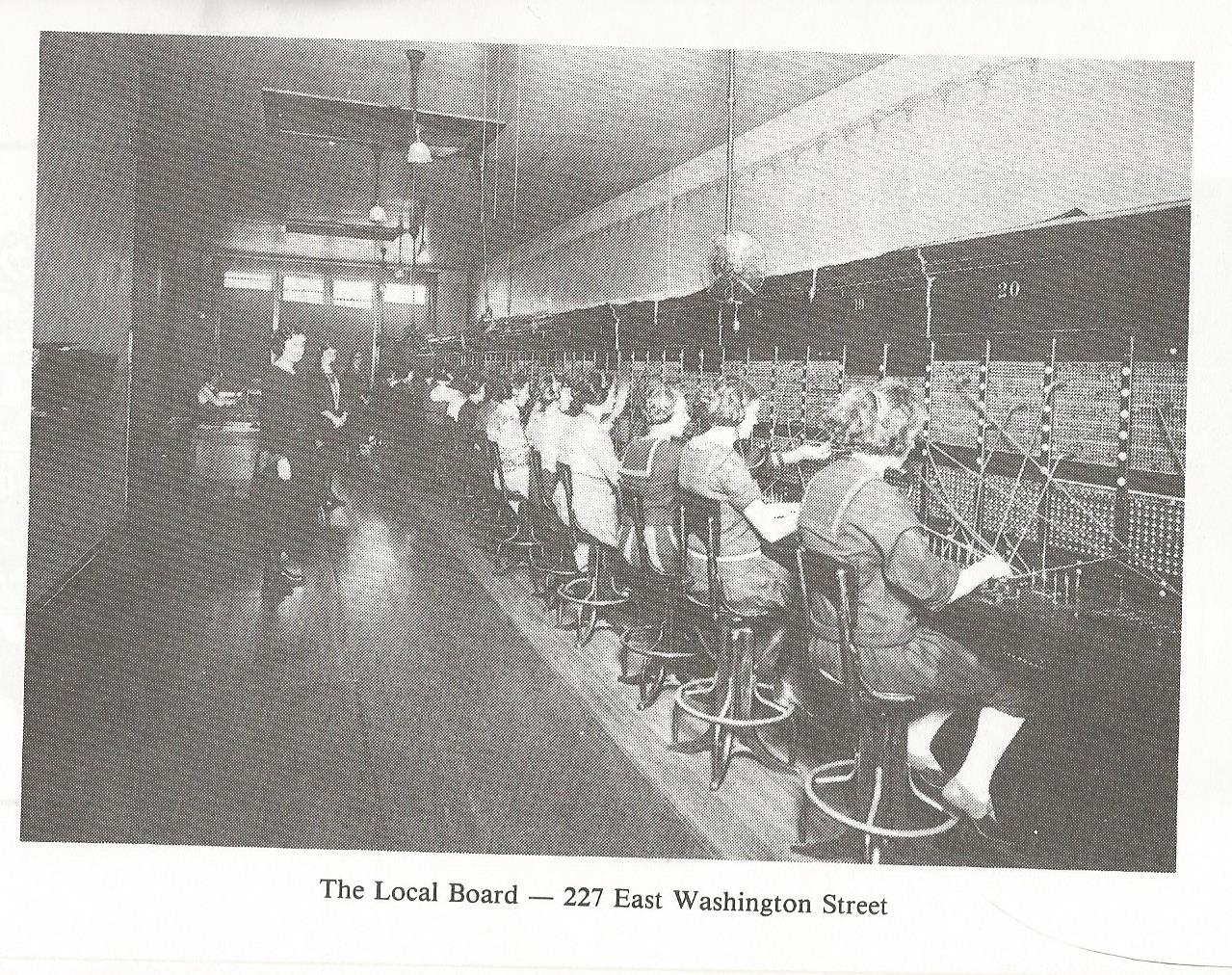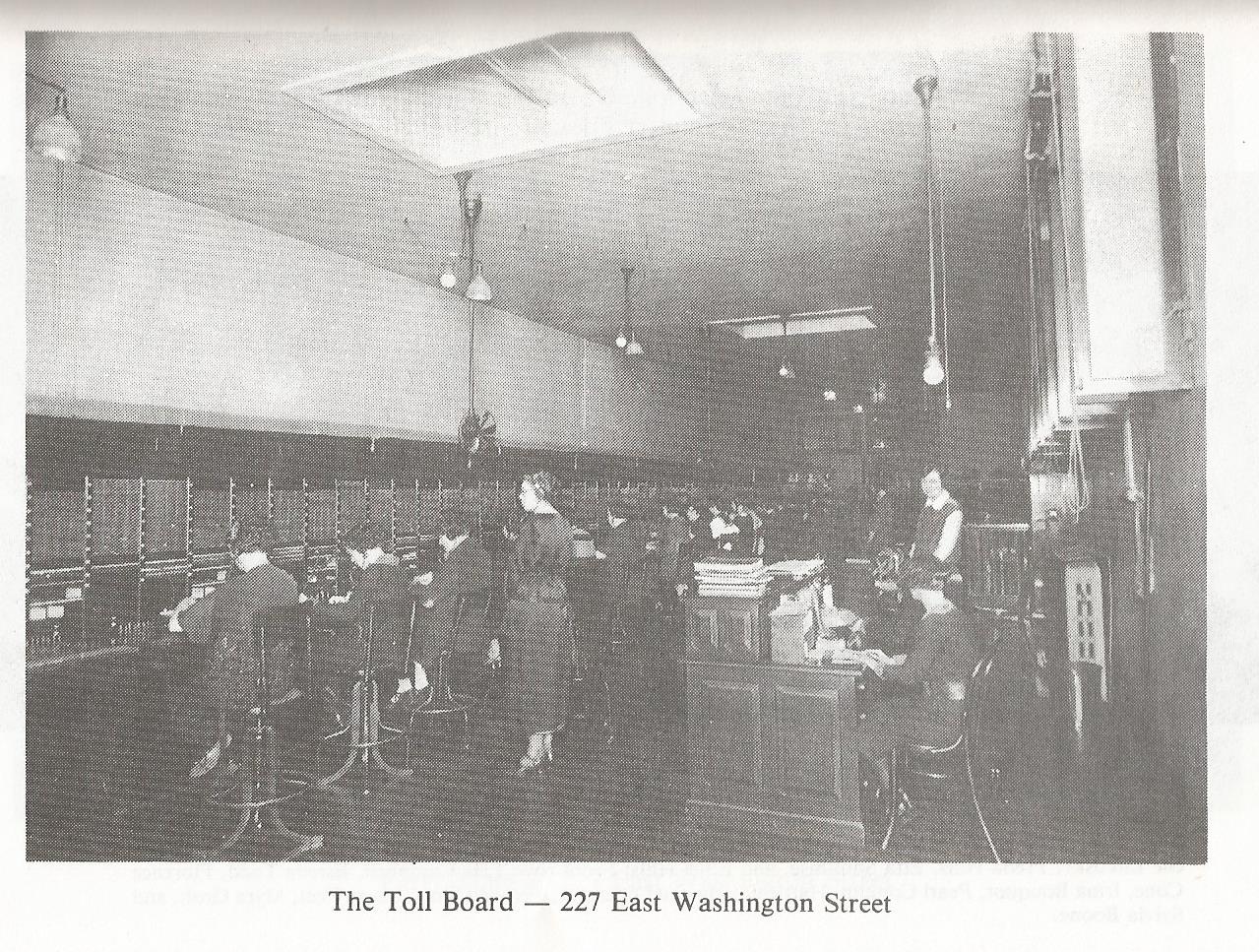

| JOHNSON COUNTY IAGenWeb Project |
A Century of Service
1881 - 1981
Telephone Operators
Iowa City, Iowa
A booklet dedicated to all the operators who worked in an Iowa City telephone exchange.
Printed for the the Iowa City Telephone Pioneers of America
Created on April 30, 1984 by Dorothy A Dayton
| FOREWORD Sixteen operators who worked in an Iowa City telephone exchange share their memories with the reader of these pages. The years covered by their memories range from 1917 to 1981, the year the exchange's traffic department was closed. I wish to thank each former operator who took the time to talk with me about her telephone career; I also wish to thank each one for checking over the account of her memories before publication. The operators and I have tried to be as accurate as possible in thees pages. I have included a brief sketch of exchange history in Iowa City, and also several relevant articles in order to tell the complete story. We hope that you, the reader, will enjoy the journey through bygone days. Finally, I wish to thank the Iowa City Press-Citizen and the Office of the State Historical Society for permission to reprint material which originally appeared in the pages of their publications. Dorothy A. Dayton April 30, 1984 Iowa City, Iowa |
Click on images for enlarged view
The
information below was transcribed from the Telephone Pioneers of
America publication, A
Century of Service.
| 68
- Star Grocery, W. J. Welch 51 - Saunders, S. L., store 69 - Hughes, W., residence 70 - Whetstone, J. H., drug store 66 - Close & Co., oil mill 62 - Hughes, W., music store 73 - Hinman, A. C., store |
63 - Iowa
City Glass Co. 65- O'Hanlon & Son, grocers 67 - Rockey, Dr. A. E., residence 64 - Shrader, W. E., drugs 71 - Seydel, John, residence 72- Thornberry, J.H., grocer |
| On April 29th the
paper cautioned its readers not to forget to add these names to their
card: 75 - Noel, J.B., confectionery 31 - Packing House 76 - Carson, T.C. |
|
Page Updated 7 Oct 16